ALABAMA
RACHEL JACKSON CHAPTER
MARKS GRAVE OF EDMUND DUTTON
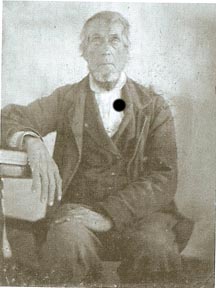
The Rachel Jackson Chapter dedicated a grave marker for Edmund Dutton, Soldier of the War of 1812 in October, 2017 at the Friendship Baptist Church Cemetery in Danville, Alabama. This church was established in 1812 before Alabama became a state.
Pvt. Edmund Dutton is an ancestor of Cheryl Harrison, the Chaplain of the Rachel Jackson Chapter. Edmund Dutton was born on September 07. 1792 in Charles County, Maryland. He was the son of Zachariah Dutton who served in the Maryland militia during the American Revolution.
Edmund Dutton entered the War of 1812 as a private in Captain William Green's company, Fifth Regiment. On July 4, 1814, the powder magazine at Norfolk exploded leaving Pvt. Dutton with injuries.
Edmund was then transferred to Captain William Palmer's company where he served from August 31, 1814 to the end of his service. He was honorably discharged on December 05, 1814 at Fort Nelson, Norfolk, Virginia.
After the war, Edmund Dutton migrated to North Alabama. He married Margaret Barnett Ross in Limestone County, Alabama on July 11, 1821. Margaret was the daughter of William and Christina Ross.
Edmund Dutton received a bounty land grant from the U.S. Government for his 1812 service and cultivated a successful farm which had, by 1860, grown to include more than 600 acres.
Dutton was very active in the Friendship Baptist Church and in the community where he lived. He died on December 28, 1882.
A reception was held at the church following the dedication of the marker.
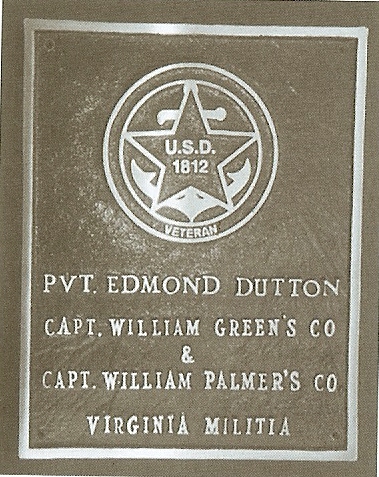
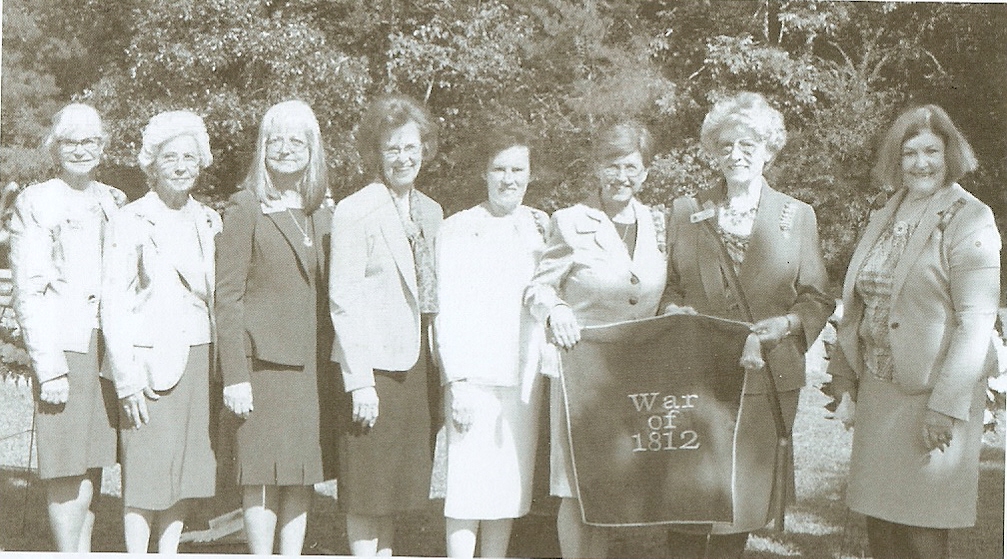
Rachel Jackson Chapter Officers L to R: Brenda Winters, Oma Gaines, Wilma Stone, Beth Weir, Cheryl Harrison,
and Twyla Brammel with Sandra Wilson Alabama State President and Martha Ann Whitt, Grave Marking Chairman
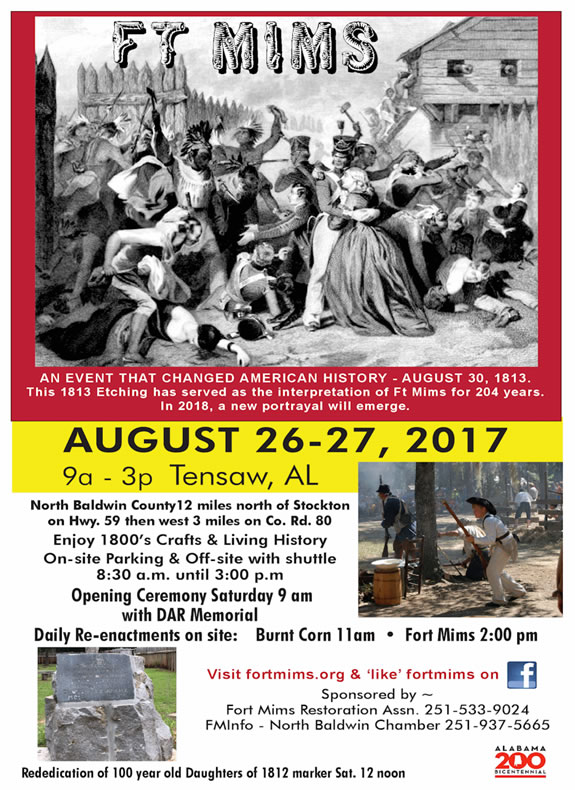
.jpg)
Rededication of 100 year old Fort Mims Marker on August 26, 2017 by AL Society U. S. Daughters 1812
Shown L to R Kelly Stewart (FMRA member), Sandra Scott Wilson (President of theAlabama 1812 Society)
Carol May (President Major Uriah Blue Chapter) and Claudia Campbell (Fort Mims Restoration Associaton)
.jpg)
1812 monument placed in Oak Hill Cemetery, March 18, 2016.
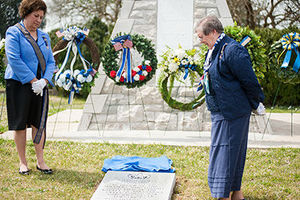 4
4
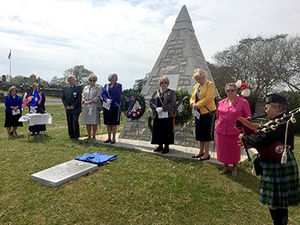
Tucker Webb/The Daily Home
The Alabama Charter Chapter of the Daughters of 1812 placed a new marker Friday in Oak Hill Cemetery in honor of the 19 men killed during or immediately after the Battle of Talladega in late 1813.
According to the remarks made at the ceremony by historian Gail Massey Pugh, “The Battle of Talladega was fought on the ninth day of November, 1813. Maj. Gen. Andrew Jackson and his army of White Stick Indians and Tennessee militiamen, numbering 2,000, were asked by the friendly Creeks for protection from the Red Sticks Creek Indians, a British proxy force of about 700 lead by William Weatherford. The site of the battle was Fort Leslie, often mistakenly called ‘Fort Lashley.’”
In fact, the friendly Creeks were surrounded by the Red Sticks at the fort. One young man inside the fort managed to locate an intact pig skin with the head still attached, which he used as a disguise. Once across enemy lines, he sought Jackson’s help in breaking the siege.
“The battle lasted 20 minutes,” Pugh said. “The casualties of the Red Sticks were 300 killed and 110 wounded. The men under Andrew Jackson number 15 killed in the battle and four who died later of their wounds. There are 19 men who are identified at this gravesite.”
Those men are Pvt. William Arnold, Pvt. Henry Barnes, Lt. Samuel Barton, Lt. Larkin Bradford, Pvt. William Fletcher, Pvt. David Gold, Pvt. Jeremiah Gurley, Pvt. James Gwin, Pvt. Asa Hardin, Pvt. Nathan Harris, Pvt. John Hopkins, Pvt. Adam Matts, Pvt. William McCall, Pvt.
James McClish, Lt. Robert Moore, Pvt. James Patton, Pvt. Absolom Russell, Pvt. Thomas Saunders and Pvt. Thomas Taylor.
General Society of the War of 1812 in Alabama President James G. Alexander said the battle of Talladega, while brief, was important for two reasons.
First of all, the siege of Fort Leslie was finally broken, and secondly, the number of Red Sticks killed significantly reduced the number of fighters at the Battle of Horseshoe Bend a few months later, where their power was broken once and for all.
The bodies of Jackson’s men killed in action were moved to their current resting place in Oak Hill Cemetery at the turn of the 20th century. The pyramid monument was erected to honor them.
After the new marker was placed, a piper played “Amazing Grace” and “Taps.”
PHOTO OF ALABAMA STATE OFFICERS WITH PRESIDENT NATIONAL LYNNE SCHULMAN
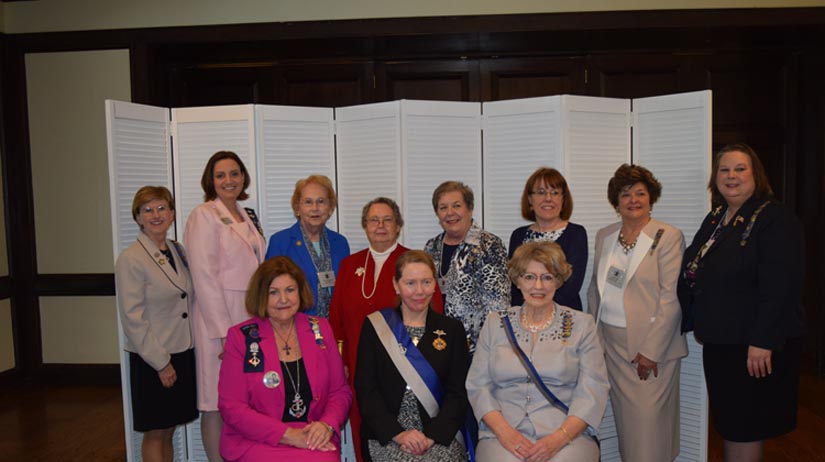
FOR PHOTOS OF ALABAMA DAUGHTERS 2015-2016 TAKEN BY BRNEDA WINTER
RACHEL JACKSON CHAPTER FOLLOW THIS LINK BY Clicking Here or pasting in https://www.flickr.com/photos/79411052@N07/albums/72157664453833913
CLICK HERE TO SEE PHOTOS
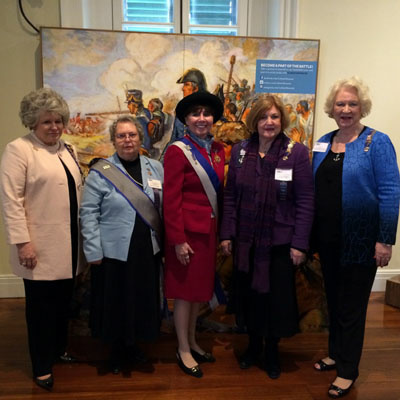
Alabama Daughters with President Virginia Apyar
Bicentennial of Battle of New Orleans Jan 8, 2015
L to R: Connie Grund, Shelby Ward, President Apyar, Ann Whitt and David Williams
Photo by Brenda Winter
https://www.flickr.com/photos/79411052@N07/albums/72157665855453265
Photos of Marker placed at Ditto Landing on the Tennessee River by Rachel Jackson Chapter Daughters of
of 1812 on March 09, 1815
Click Here

